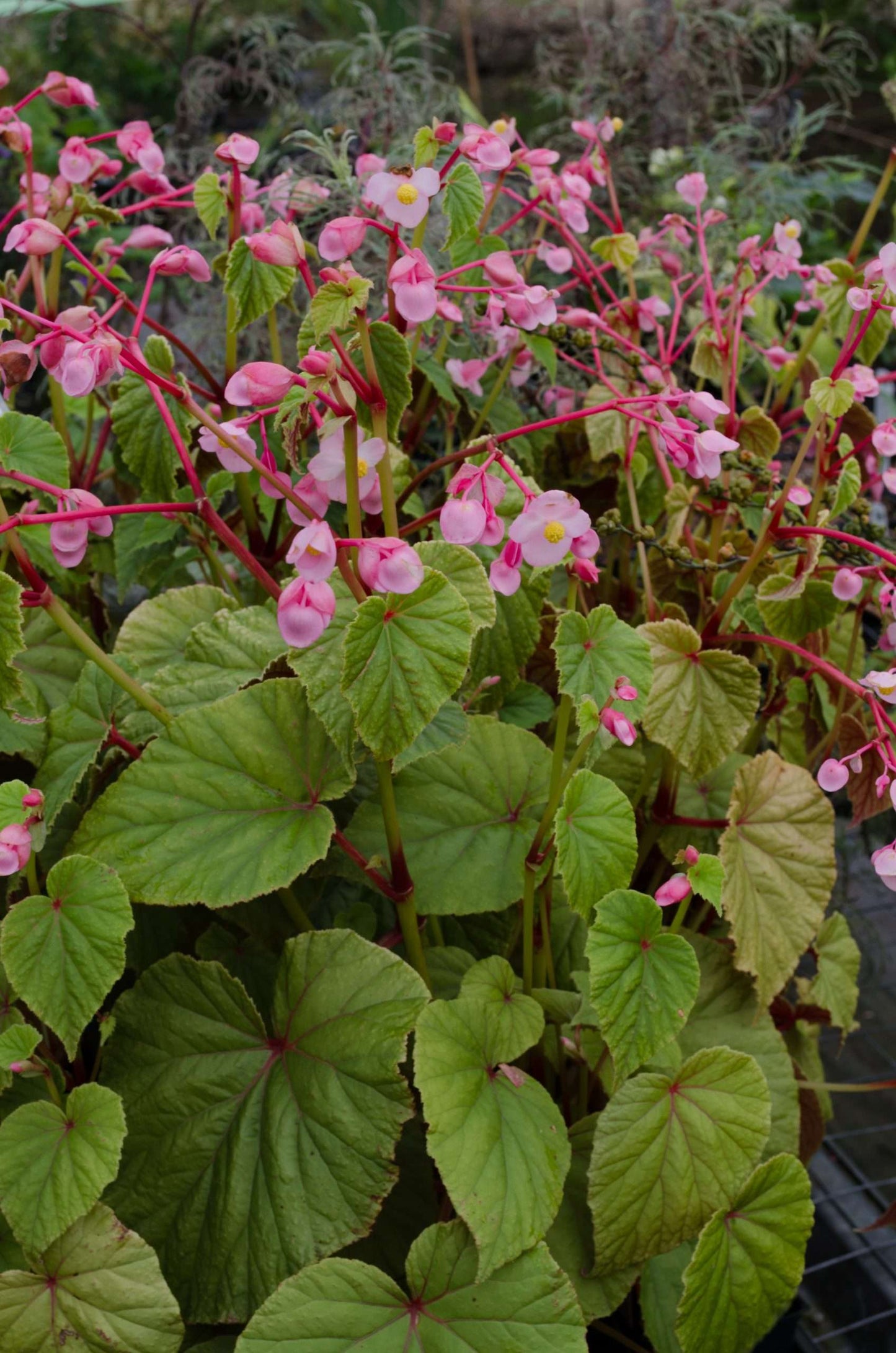Begonia Grandis: A Hardy Beauty for Shaded gardens
Begonia grandis, often referred to as the Hardy Begonia or the Cold-Hardy Begonia, stands out as a unique and captivating member of the vast Begonia genus. Unlike its tropical cousins, Begonia grandis possesses the remarkable ability to withstand cooler temperatures and even survive mild frosts, making it a beloved addition to shaded gardens in temperate climates. This article delves into the fascinating world of Begonia grandis, exploring its origins, characteristics, cultivation, propagation, and potential uses.
Begonia grandis is native to China and Japan, where it thrives in the understory of forests and along shaded slopes. Its natural habitat provides the cool, moist conditions that this species prefers. The plant‘s adaptability to these environments has contributed to its hardiness and resilience, allowing it to flourish in gardens beyond its native range.

Begonia grandis is a herbaceous perennial that dies back to its underground tubers during winter dormancy. Its most notable features include:
Foliage
The leaves are heart-shaped, or cordate, with a slightly asymmetrical base.
flowers
Begonia grandis produces delicate, pink or white flowers that bloom in late summer and early autumn.
Tubers and Bulbils

The plant develops underground tubers that store nutrients and allow it to survive winter dormancy.
Begonia grandis is relatively easy to grow, provided its basic needs are met. Here’s a comprehensive guide to cultivating this hardy begonia:
Planting and Location
Choose a location with partial to full shade. Direct sunlight, especially during the hottest part of the day, can scorch the leaves.
Soil and Watering
Begonia grandis prefers consistently moist, but not waterlogged, soil.
Temperature and Humidity
Begonia grandis is hardy to USDA hardiness zones 6-9, depending on the specific cultivar and local conditions.
Fertilizing
Feed Begonia grandis with a balanced liquid fertilizer every 4-6 weeks during the growing season.
Mulching
Apply a layer of mulch around the plants to help retain moisture, suppress weeds, and insulate the soil.
Winter Care
In colder climates, the foliage will die back after the first frost.
Begonia grandis can be propagated through several methods:
Division
Divide established clumps of tubers in spring before new growth begins.
Bulbils
Collect the bulbils that form in the leaf axils in late summer or early autumn.
Seed
Sow seeds indoors in late winter or early spring.
Begonia grandis adds a touch of elegance and charm to shaded gardens. Its versatility makes it a valuable addition to various landscape designs:
Shade Gardens
Its ability to thrive in shade makes it ideal for woodland gardens, understory plantings, and north-facing borders.
Containers
Begonia grandis can be grown in containers, allowing you to enjoy its beauty on patios, balconies, and shaded porches.
Naturalizing
Edging and Borders
While Begonia grandis is relatively trouble-free, it can be susceptible to a few problems:
Root Rot
Overwatering or poorly draining soil can lead to root rot.
Slugs and Snails
Slugs and snails can damage the leaves and flowers.
Powdery Mildew
Powdery mildew can occur in humid conditions.
Botrytis Blight
While the species itself is widely grown, there are also some notable cultivars and varieties:
‘Alba’
‘Heronswood Hybrid’
Begonia grandis is a delightful and resilient plant that brings a touch of elegance to shaded gardens. Its hardy nature, beautiful foliage, and delicate flowers make it a valuable addition to any landscape. With proper care and attention, this unique begonia will thrive and reward gardeners with its enduring beauty for years to come. By understanding its needs and appreciating its unique characteristics, you can fully embrace the charm of Begonia grandis and create a tranquil and enchanting shaded garden.


